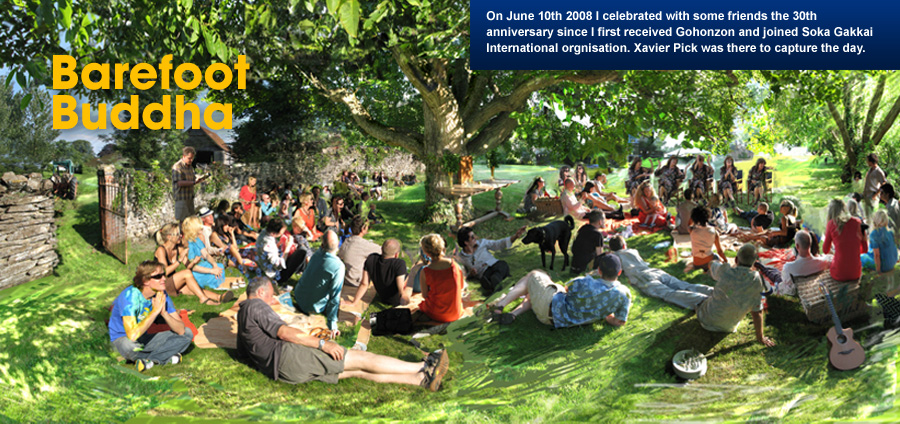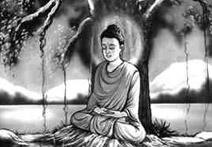
Process
We do not need to understand exactly how this Buddhism works before we can make use of it to our advantage. Though we cannot see the law of gravity, we can attest to its existence.
Eternity of Life
Some religions teach that we live only one lifetime, and when we die, we go permanently to heaven or hell.

In Buddhism, one’s life or essence has no beginning or end. We live many lifetimes, repeating the cycle of birth and death. Like going to sleep at night, we refresh our bodies and wake up anew.
Everything we’ve done until this moment adds up to who we are. This is the law of cause and effect in action, this is Karma.
Karma is like a bank for our thoughts, deeds, and actions (causes) until, when our lives meet the right environmental conditions, we experience the results (effect).
As we live our lives (making causes), effects reside within us, and when we die, those effects dictate the circumstances of our birth in the next life.

So when we are reborn, we still face the same problems or karma from causes we have made. This goes a long way to explaining why people are born under such different circumstances -- in other words, why people have different karma.
This principle of cause and effect suggests we can change our karma or destiny that we may have thought unchangeable. This is the great hope and promise offered by Buddhist practice.
The Ten Worlds
One way that Buddhism explains life is through a concept known as “The Ten Worlds."

These are ten states, or conditions, of life that we experience within ourselves and are then manifested throughout all aspects of our lives.
6 paths or lower worlds
Of ‘the Ten Worlds’, the worlds of Hell, Hunger, Animality, Anger, Tranquility and Rapture are considered the 6 paths, or lower worlds.
They are considered the lower worlds because the emergence or disappearance of these life states are governed by external circumstances.
When we recognize that everything experienced in the 6 lower worlds is impermanent, we begin to seek some lasting truth.
4 noble paths or worlds
Unlike the 6 paths, which are passive reactions to the environment, the four noble worlds of Learning, Realization, Bodhisattva, and Buddahood are achieved through deliberate effort.
Mutual Possession of the Ten Worlds
In Nichiren Daishonin’s Buddhism, all Ten Worlds are viewed as conditions of life that all people have the potential to experience.

At any moment, one of the ten will manifest while the other nine remain dormant, but there is always the potential for change.
All of us have particular worlds around which our life-activities usually center and to which we tend to revert when external stimuli arise.
The purpose of Buddhist practice is to elevate this basic life-tendency and eventually establish Buddhahood as one’s fundamental state of life.
When our lives are based on the life-tendency of Buddhahood, the other nine worlds will be harmonized and function to benefit both ourselves and those around us.
The Oneness of Life and Its Environment
The principle of the oneness of life and its environment describes the inseparable relationship of the individual and their surroundings.

The effects of one’s karma, both good and bad, manifest themselves both in one’s self and in the environment, because these are two integral phases of the same entity.
From this standpoint, our life is not confined to ourselves, but exerts an influence on our families, communities, nations, and ultimately all humanity.
Since both life and its environment are one, whichever of the Ten Worlds an individual manifests internally will be mirrored in his or her environment.

A person in the state of hell will perceive the environment to be hellish, while a person in the world of animality will perceive the same environment as a jungle where only the strong survive.
Wherever we are, under whatever circumstances, we can bring forth our innate Buddhahood through the Buddhist practice, thus transforming our experience of our environment into the Buddha’s land.

